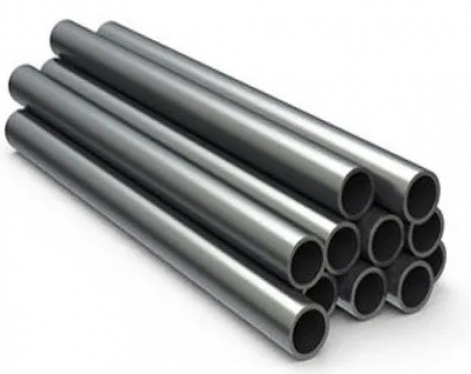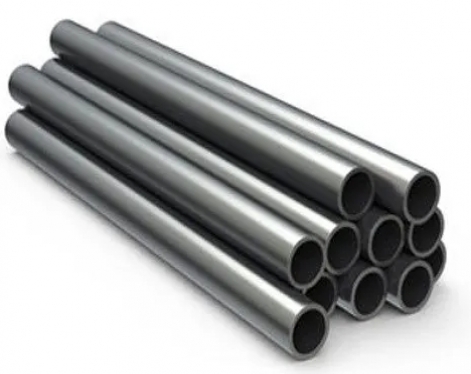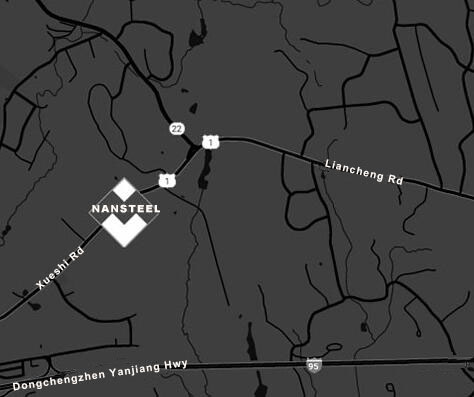Generally speaking, the profit margin of the seamless steel pipe industry is at a medium to low level. The profit margin of the seamless steel pipe industry is affected by many factors, so it is not static. The profit margin of the seamless steel pipe industry is generally affected by factors such as raw material prices, production costs, market demand, technological innovation, and environmental protection policies. Nansteel Manufacturing Co., Ltd carefully summarizes that the profit margin of the seamless steel pipe industry is mainly affected by the following 6 aspects:
Raw material cost
Fluctuations in steel prices: Raw materials (such as steel billets, alloy elements, etc.) account for a large proportion of the production cost of seamless steel pipes. Fluctuations in the prices of steel raw materials have a direct impact on the industry's profit margins. If steel prices rise, production costs will increase, and companies may find it difficult to pass on costs by raising product prices, and profit margins will be compressed. On the contrary, if steel prices fall, production costs will decrease, and corporate profit margins may increase.
International market fluctuations: Steel prices in the domestic market are often affected by fluctuations in the international steel market. For example, changes in the global steel supply chain (such as export policies, increased or decreased global demand, etc.) will directly affect raw material prices, and thus affect the production costs and profits of seamless steel pipes.

Market demand
Impact of downstream demand: Seamless steel pipes are mainly used in industries such as oil and gas, construction, chemicals, and electricity. If the demand from these downstream industries is strong, the order volume of the seamless steel pipe industry will increase, and the production capacity and sales volume of enterprises will be improved, thereby driving up profit margins. For example, when investment in oil and gas exploration and development, construction infrastructure, and other fields increases, the demand for seamless steel pipes may increase significantly, promoting the improvement of the overall profit level of the industry.
Cyclical fluctuations: The seamless steel pipe industry has a certain degree of cyclicality and is usually affected by macroeconomic cyclical fluctuations. For example, during periods of economic expansion, demand from downstream industries increases, demand for steel pipes is strong, and profit margins are relatively high; while during periods of economic recession or depression, demand decreases and profit margins in the steel pipe industry tend to be compressed.
Industry competition
Low industry concentration: The market competition in the seamless steel pipe industry is fierce, especially in a major production country like China, where the problem of overcapacity is more serious. A large number of small and medium-sized steel pipe companies have flooded into the market, leading to vicious price competition, thereby squeezing the profit margins of companies.
Price competition: As a traditional basic manufacturing product, seamless steel pipes are often subject to very fierce price competition, especially when market demand is relatively saturated. In order to compete for market share, companies often have to lower prices, which further affects the overall industry profit margin.
Production process and technology upgrade
High value-added products: With the continuous improvement of seamless steel pipe production technology, enterprises have begun to produce high-end products (such as special oil pipes , high-temperature and high-pressure pipes, stainless steel pipes, etc.). These products have high added value and can provide higher profit margins. The use of advanced technology and optimized production processes can improve production efficiency and product quality, thereby increasing profit margins.
Intelligence and automation: Many steel pipe manufacturers are promoting intelligent and automated production to reduce labor costs and improve production efficiency. The application of these technologies helps to reduce production costs and thus increase the company's profit level.
Environmental policy and regulation
Environmental governance costs: In recent years, environmental protection laws and regulations in some countries have become increasingly stringent. Steel pipe companies are facing greater environmental pressure. Companies need to invest a lot of money in pollution control equipment and technology updates, which will increase production costs and thus have a negative impact on profit margins.
Policy support: On the other hand, some local governments will provide certain policy support and subsidies to high-tech enterprises or green environmental protection enterprises, which will help improve the profitability of enterprises, especially those seamless steel pipe manufacturers that meet the requirements of environmental protection and sustainable development.
Labor costs
Labor costs: With the changes in the labor market, labor costs are rising year by year. Especially in some low-cost labor areas, companies need to invest more money in employee benefits, wages and training. This will lead to higher production costs, which in turn affects profit margins. In response to rising labor costs, companies may accelerate investment in automated production lines to improve production efficiency.
Read more: The Price of American Standard Seamless Pipe in the International Market
Raw material cost
Fluctuations in steel prices: Raw materials (such as steel billets, alloy elements, etc.) account for a large proportion of the production cost of seamless steel pipes. Fluctuations in the prices of steel raw materials have a direct impact on the industry's profit margins. If steel prices rise, production costs will increase, and companies may find it difficult to pass on costs by raising product prices, and profit margins will be compressed. On the contrary, if steel prices fall, production costs will decrease, and corporate profit margins may increase.
International market fluctuations: Steel prices in the domestic market are often affected by fluctuations in the international steel market. For example, changes in the global steel supply chain (such as export policies, increased or decreased global demand, etc.) will directly affect raw material prices, and thus affect the production costs and profits of seamless steel pipes.

Market demand
Impact of downstream demand: Seamless steel pipes are mainly used in industries such as oil and gas, construction, chemicals, and electricity. If the demand from these downstream industries is strong, the order volume of the seamless steel pipe industry will increase, and the production capacity and sales volume of enterprises will be improved, thereby driving up profit margins. For example, when investment in oil and gas exploration and development, construction infrastructure, and other fields increases, the demand for seamless steel pipes may increase significantly, promoting the improvement of the overall profit level of the industry.
Cyclical fluctuations: The seamless steel pipe industry has a certain degree of cyclicality and is usually affected by macroeconomic cyclical fluctuations. For example, during periods of economic expansion, demand from downstream industries increases, demand for steel pipes is strong, and profit margins are relatively high; while during periods of economic recession or depression, demand decreases and profit margins in the steel pipe industry tend to be compressed.
Industry competition
Low industry concentration: The market competition in the seamless steel pipe industry is fierce, especially in a major production country like China, where the problem of overcapacity is more serious. A large number of small and medium-sized steel pipe companies have flooded into the market, leading to vicious price competition, thereby squeezing the profit margins of companies.
Price competition: As a traditional basic manufacturing product, seamless steel pipes are often subject to very fierce price competition, especially when market demand is relatively saturated. In order to compete for market share, companies often have to lower prices, which further affects the overall industry profit margin.
Production process and technology upgrade
High value-added products: With the continuous improvement of seamless steel pipe production technology, enterprises have begun to produce high-end products (such as special oil pipes , high-temperature and high-pressure pipes, stainless steel pipes, etc.). These products have high added value and can provide higher profit margins. The use of advanced technology and optimized production processes can improve production efficiency and product quality, thereby increasing profit margins.
Intelligence and automation: Many steel pipe manufacturers are promoting intelligent and automated production to reduce labor costs and improve production efficiency. The application of these technologies helps to reduce production costs and thus increase the company's profit level.
Environmental policy and regulation
Environmental governance costs: In recent years, environmental protection laws and regulations in some countries have become increasingly stringent. Steel pipe companies are facing greater environmental pressure. Companies need to invest a lot of money in pollution control equipment and technology updates, which will increase production costs and thus have a negative impact on profit margins.
Policy support: On the other hand, some local governments will provide certain policy support and subsidies to high-tech enterprises or green environmental protection enterprises, which will help improve the profitability of enterprises, especially those seamless steel pipe manufacturers that meet the requirements of environmental protection and sustainable development.
Labor costs
Labor costs: With the changes in the labor market, labor costs are rising year by year. Especially in some low-cost labor areas, companies need to invest more money in employee benefits, wages and training. This will lead to higher production costs, which in turn affects profit margins. In response to rising labor costs, companies may accelerate investment in automated production lines to improve production efficiency.
Read more: The Price of American Standard Seamless Pipe in the International Market









